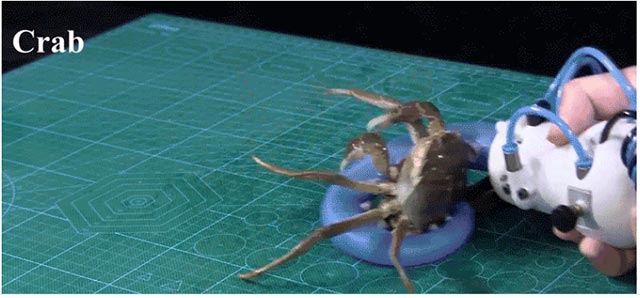This 'octopus' robot arm can stick to almost any object
Robot technology is being invested and developed on an unprecedented scale on a global scale in the past few years. Besides promoting the application of artificial intelligence, materials and design of robots are also the top concerns.
In particular, improving the grip of the robot is the most complex task. It requires the help of both artificial intelligence (to accurately identify the object) and the appropriate robot construction materials (to ensure the ability to adhere and not to damage the object). Last September, Nvidia sparked the technology world by introducing a new algorithm, called 6-Dof-GraspNet, that allowed robots to distinguish and select arbitrary objects. 1 month later, OpenAI introduces Dactyl, a robot hand capable of learning how to solve complex Rubik's cube in a short time.
Today, an international interdisciplinary team of experts from Harvard University, the United States and Beihang University, China, has continued to stir technology enthusiasts by introducing soft robot arms, ingenious and extremely intelligent, able to identify and hold nearly every object in its power, with the shape inspired by the octopus tentacles.
The secret is a flexible, high-friction material used as a robotic arm, combined with simulated 'vacuum cups' with the octopus tentacles. This novel design allows the robot to hold, move and control countless objects of various shapes, as long as the size is not too large, from thin plastic sheets, coffee mugs, pipes. experience, eggs, even a live crab.
 This 'octopus' robot arm can stick to almost any object Picture 1
This 'octopus' robot arm can stick to almost any object Picture 1
To create this amazing robotic arm, the researchers first carefully calculated the shape and mechanism of action of octopus tentacles in nature (these arms are a type of hydrostatic chamber muscles), then select the most optimal mechanism as well as the material is soft enough and has the ability to adhere like real tan skin, especially the indispensable 'suction cup' on the arm. These vacuum-based bio-suction tubes can attach to almost any object.
The operation of the robot arm is basically determined by the two valve systems. One valve creates pressure to bend the arm, while the other acts as a vacuum system that distributes force to the suction cups. Naturally, the amount of pressure and vacuum will be applied flexibly, allowing effective adhesion to certain types of objects.
The birth of this exciting robotic arm will provide new insights into the making of robotic actuators based on soft materials, paving the way for creating giant or ultra-small robotic arms, but extremely ingenious to perform the work of danger or high difficulty on behalf of people.
You should read it
- Watch the ingenious robot hand catch a jellyfish without injuring it
- The doctor controls the robot to operate on the patient at a distance of 2,000km
- The therapeutic robot, Qoobo cat only knows one thing to wag its tail
- Primer - Super transform robot like Transformer
- Amazon is building its first in-house robot
- Robotic guards integrate drones to chase the thief
- Robot milliDelta robot is set up with roles in production and medicine
- Giant Robot War: America wins Japan
- The world's first terrain-crossing robot can move like a snake
- Bartenders beware: This robot can make a cocktail in just 1 minute
- 10 robots have succeeded in proving they are new generation animals
- Russian new robots can shoot themselves with two hands like humans
May be interested

Using AI to develop super strong antibiotics that can kill antibiotic-resistant bacteria

The United Nations will use AI to promote peace in conflict areas

Found at least 9 gender expressions in the human brain

Panasonic introduces advanced IoT & AI management solutions for smart homes

Autoflip, Google's new AI model, can customize videos with any screen size

Bartenders beware: This robot can make a cocktail in just 1 minute






 Octopus seize and drown seagulls at a glance
Octopus seize and drown seagulls at a glance The blue-spotted octopus has 50 times more venom than a cobra that kills people in an instant
The blue-spotted octopus has 50 times more venom than a cobra that kills people in an instant Spectacular escape screen of giant octopus through small holes
Spectacular escape screen of giant octopus through small holes A good tip for a non-stick pan is to be durable and not be close
A good tip for a non-stick pan is to be durable and not be close It turned out that the octopus gave up its ability to evolve to become smarter
It turned out that the octopus gave up its ability to evolve to become smarter Spider crabs compete to tear the octopus's corpse under the sea
Spider crabs compete to tear the octopus's corpse under the sea